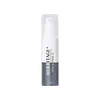What's inside
What's inside
 Key Ingredients
Key Ingredients

 Benefits
Benefits

 Concerns
Concerns

 Ingredients Side-by-side
Ingredients Side-by-side

Water
Skin ConditioningPropylheptyl Caprylate
EmollientNiacinamide
SmoothingHydrolyzed Opuntia Ficus-Indica Flower Extract
AbrasiveAcetyl Glucosamine
Skin ConditioningHydroxypropyl Cyclodextrin
MaskingCaprylic/Capric Triglyceride
MaskingPropanediol
SolventFerulic Acid
AntimicrobialEthoxydiglycol
HumectantBisabolol
MaskingResveratrol
AntioxidantTranexamic Acid
AstringentBromelain
Skin ConditioningPropylene Glycol
HumectantAlpha-Arbutin
AntioxidantDipropylene Glycol
HumectantPhenoxyethanol
PreservativeGlycerin
HumectantAllantoin
Skin ConditioningSodium Diethylenetriamine Pentamethylene Phosphonate
Sodium Gluceptate
Tris(Tetramethylhydroxypiperidinol)Citrate
StabilisingPolysorbate 80
EmulsifyingLecithin
EmollientEthylhexyl Palmitate
EmollientCetyl Alcohol
EmollientPEG-75 Stearate
Artocarpus Lakoocha Wood Extract
AntimicrobialCholesterol
EmollientPhospholipids
Skin ConditioningCetearyl Olivate
Sorbitan Olivate
EmulsifyingXanthan Gum
EmulsifyingBHT
AntioxidantOryza Sativa Bran Extract
Skin ConditioningSqualene
EmollientSodium Benzoate
MaskingCeteth-20
CleansingSteareth-20
CleansingEthyl Linoleate
EmollientCeramide NP
Skin ConditioningPhenylethyl Resorcinol
AntioxidantDisodium EDTA
Tocopheryl Acetate
AntioxidantGlyceryl Stearate
EmollientPentaerythrityl Tetra-Di-T-Butyl Hydroxyhydrocinnamate
AntioxidantAlcohol Denat.
AntimicrobialMadecassic Acid
Skin ConditioningAsiatic Acid
Skin ConditioningAsiaticoside
AntioxidantEctoin
Skin ConditioningSodium Deoxycholate
Skin ConditioningPalmitoyl Sh-Tripeptide-3 Amide
HumectantGarcinia Mangostana Peel Extract
Skin ConditioningWater, Propylheptyl Caprylate, Niacinamide, Hydrolyzed Opuntia Ficus-Indica Flower Extract, Acetyl Glucosamine, Hydroxypropyl Cyclodextrin, Caprylic/Capric Triglyceride, Propanediol, Ferulic Acid, Ethoxydiglycol, Bisabolol, Resveratrol, Tranexamic Acid, Bromelain, Propylene Glycol, Alpha-Arbutin, Dipropylene Glycol, Phenoxyethanol, Glycerin, Allantoin, Sodium Diethylenetriamine Pentamethylene Phosphonate, Sodium Gluceptate, Tris(Tetramethylhydroxypiperidinol)Citrate, Polysorbate 80, Lecithin, Ethylhexyl Palmitate, Cetyl Alcohol, PEG-75 Stearate, Artocarpus Lakoocha Wood Extract, Cholesterol, Phospholipids, Cetearyl Olivate, Sorbitan Olivate, Xanthan Gum, BHT, Oryza Sativa Bran Extract, Squalene, Sodium Benzoate, Ceteth-20, Steareth-20, Ethyl Linoleate, Ceramide NP, Phenylethyl Resorcinol, Disodium EDTA, Tocopheryl Acetate, Glyceryl Stearate, Pentaerythrityl Tetra-Di-T-Butyl Hydroxyhydrocinnamate, Alcohol Denat., Madecassic Acid, Asiatic Acid, Asiaticoside, Ectoin, Sodium Deoxycholate, Palmitoyl Sh-Tripeptide-3 Amide, Garcinia Mangostana Peel Extract
Ingredients Explained
These ingredients are found in both products.
Ingredients higher up in an ingredient list are typically present in a larger amount.
Disodium EDTA plays a role in making products more stable by aiding other preservatives.
It is a chelating agent, meaning it neutralizes metal ions that may be found in a product.
Disodium EDTA is a salt of edetic acid and is found to be safe in cosmetic ingredients.
Learn more about Disodium EDTAGlycerin is already naturally found in your skin. It helps moisturize and protect your skin.
A study from 2016 found glycerin to be more effective as a humectant than AHAs and hyaluronic acid.
As a humectant, it helps the skin stay hydrated by pulling moisture to your skin. The low molecular weight of glycerin allows it to pull moisture into the deeper layers of your skin.
Hydrated skin improves your skin barrier; Your skin barrier helps protect against irritants and bacteria.
Glycerin has also been found to have antimicrobial and antiviral properties. Due to these properties, glycerin is often used in wound and burn treatments.
In cosmetics, glycerin is usually derived from plants such as soybean or palm. However, it can also be sourced from animals, such as tallow or animal fat.
This ingredient is organic, colorless, odorless, and non-toxic.
Glycerin is the name for this ingredient in American English. British English uses Glycerol/Glycerine.
Learn more about GlycerinPhenoxyethanol is a preservative that has germicide, antimicrobial, and aromatic properties. Studies show that phenoxyethanol can prevent microbial growth. By itself, it has a scent that is similar to that of a rose.
It's often used in formulations along with Caprylyl Glycol to preserve the shelf life of products.
Water. It's the most common cosmetic ingredient of all. You'll usually see it at the top of ingredient lists, meaning that it makes up the largest part of the product.
So why is it so popular? Water most often acts as a solvent - this means that it helps dissolve other ingredients into the formulation.
You'll also recognize water as that liquid we all need to stay alive. If you see this, drink a glass of water. Stay hydrated!
Learn more about Water